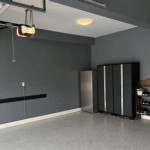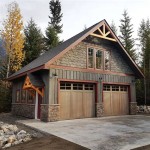Can You Put a Dryer Vent in the Garage Ceiling? A Comprehensive Guide
Proper ventilation is crucial for the safe and efficient operation of a clothes dryer. The dryer generates significant amounts of heat and moisture, along with lint, all of which must be effectively removed from the appliance and the surrounding environment. Improper venting can lead to several problems, including increased drying times, higher energy bills, the growth of mold and mildew, and even fire hazards due to lint accumulation. Consequently, the location and method of venting must be carefully considered during dryer installation.
One potential venting option that homeowners occasionally explore is directing the dryer exhaust through the garage ceiling. This approach, while seemingly convenient in some situations, presents a unique set of challenges and concerns that require careful evaluation. This article aims to provide a comprehensive understanding of the feasibility, safety, and code compliance considerations associated with venting a dryer into a garage ceiling. We will explore the potential ramifications and necessary precautions, aiding in making an informed decision regarding the most appropriate venting strategy.
Understanding the Basics of Dryer Venting
Before delving into the specifics of venting a dryer through a garage ceiling, it is essential to grasp the fundamental principles of proper dryer venting. The primary objective is to expel hot, moist air and lint from the dryer to the outdoors as efficiently and safely as possible. Several factors influence the effectiveness of a dryer vent system, including the length and material of the ductwork, the number of bends, and the location of the exhaust termination point.
The International Residential Code (IRC), along with local building codes, establishes specific requirements for dryer venting. These codes are designed to minimize fire hazards and ensure proper ventilation. Key requirements typically include the use of rigid metal ductwork (preferably smooth-walled rather than flexible foil or plastic), a maximum duct length (often around 25 equivalent feet, with deductions for bends), and a termination point that is away from doors, windows, and other building openings. Fire dampers may also be indicated in certain applications. Adhering to these codes is paramount to ensuring a safe and compliant installation.
The selection of ductwork material is of critical importance. While flexible foil or plastic ducts may seem easier to install, they are generally discouraged due to their susceptibility to lint accumulation and fire hazards. Rigid metal ductwork, specifically galvanized steel or aluminum, offers superior fire resistance and smoother internal surfaces, reducing the likelihood of lint buildup. Furthermore, rigid ductwork is less prone to kinking or collapsing, which can restrict airflow and diminish drying efficiency. The diameter of the ductwork is also crucial; a 4-inch diameter is standard and generally recommended for most residential applications.
Challenges of Venting a Dryer Through the Garage Ceiling
Venting a dryer through a garage ceiling introduces several potential challenges and drawbacks that must be carefully considered. These challenges relate to safety, code compliance, and the potential for moisture-related problems within the garage environment. Understanding these issues is crucial for making an informed decision about the feasibility of this venting approach.
One of the primary concerns is the potential for lint accumulation within the ductwork located in the garage ceiling. Over time, lint can build up inside the vent, reducing airflow and increasing the risk of fire. This risk is amplified if flexible ductwork is used, as its corrugated surface provides more surface area for lint to cling to. Regular cleaning of the dryer vent is essential to mitigate this risk, but accessing the ductwork within the garage ceiling can be challenging and time-consuming. The ease of access for cleaning is a critical factor when considering this installation method.
Another significant concern is the potential for moisture buildup within the garage environment. Dryer exhaust contains a substantial amount of water vapor, and if this moisture is not effectively vented to the outdoors, it can condense within the garage. This condensation can lead to the growth of mold and mildew, which can damage building materials and pose health risks. In colder climates, the moisture can also freeze, potentially causing damage to the ductwork or the surrounding ceiling structure. Proper insulation and sealing of the ductwork are essential to minimize condensation, but even with these measures, moisture buildup remains a potential issue.
Code compliance is also a major consideration. Many building codes prohibit or restrict the venting of dryers into enclosed spaces such as garages. The rationale behind these restrictions is to prevent the accumulation of moisture and lint, which can create fire hazards and indoor air quality problems. Before considering venting a dryer through the garage ceiling, it is imperative to consult with local building officials to determine whether this approach is permitted and what specific requirements must be met. Code violations can result in fines and the requirement to modify or replace the venting system.
Key Considerations and Mitigation Strategies
If, after careful consideration, a homeowner decides to proceed with venting a dryer through the garage ceiling, several key considerations and mitigation strategies must be implemented to minimize the associated risks. These strategies focus on selecting appropriate materials, ensuring proper installation, and implementing regular maintenance practices.
The selection of ductwork material is paramount. As previously mentioned, rigid metal ductwork is the preferred choice due to its fire resistance and smooth internal surface. The ductwork should be properly sealed at all joints to prevent air leakage and moisture condensation. It is also advisable to insulate the ductwork to further reduce condensation, particularly in colder climates. The insulation should be specifically designed for ductwork and should be installed according to the manufacturer's instructions.
Proper installation is equally important. The ductwork should be installed in a manner that minimizes bends and restrictions to airflow. Sharp bends can significantly reduce airflow and increase the likelihood of lint accumulation. The ductwork should also be securely supported to prevent sagging or damage. If the ductwork passes through fire-rated walls or ceilings, fire dampers should be installed to prevent the spread of fire in the event of a dryer fire. A qualified HVAC professional can ensure that the ductwork is installed correctly and in compliance with all applicable codes.
Regular maintenance is essential to prevent lint buildup and ensure the continued safe and efficient operation of the dryer. The dryer vent should be inspected and cleaned at least once a year, or more frequently if the dryer is used heavily. This can be done using a dryer vent cleaning kit or by hiring a professional dryer vent cleaning service. In addition, it is important to regularly clean the lint trap in the dryer and to inspect the exterior vent termination point to ensure that it is not blocked by debris. Proactive maintenance can significantly reduce the risk of fire and improve the overall efficiency of the dryer.
Consideration should be given to installing a lint trap that is located outside of the dryer. While dryers have internal lint traps, they don't always catch all of the lint. Adding an external lint trap, frequently referred to as an in-line lint trap, can further reduce the amount of lint that gets into the ductwork itself, thereby reducing fire risk and increasing the time between needed cleanings. This is particularly important when long duct runs are involved, or when there are numerous bends in the duct run. It adds an additional layer of protection and is relatively inexpensive to install.
Finally, ensure that the garage is adequately ventilated. Consider options such as installing an exhaust fan or ensuring that there is sufficient natural ventilation through windows or doors. This will help to remove any residual moisture that may escape from the dryer vent system and help to prevent the growth of mold and mildew. In some cases, a dehumidifier tailored to the specific square footage of the garage may also be a viable option, especially in particularly humid or cold climates.
By carefully considering these factors and implementing appropriate mitigation strategies, homeowners can minimize the risks associated with venting a dryer through the garage ceiling. However, it is always advisable to consult with a qualified HVAC professional and local building officials to ensure that the installation is safe, compliant, and appropriate for the specific application.

Venting A Clothes Dryer Into Garage Doityourself Com Community Forums

How To Install A Dryer Vent The Home Depot

How To Install A Dryer Vent The Home Depot

Dryer Vent Installation And Upgrades Diy

Atypical And Typical Dryer Vent Locations The Right Spots

This New Dryer Vent Upgrade Changes Everything Easy How To Install Diy

How To Install A Dryer Vent The Home Depot
The Exhaust Of My Dryer Vents To Crawl Space House Is That Correct Should I Change It Or Leave As Appaly Has Always Been Like
Can An Electric Dryer Be Vented Into A Garage Quora

What You Should Know About Roof Dryer Vents
Related Posts








